Lake Unicup, Australia —(Map)
Jurgen Otto is known as the Peacock Spider Man. He has driven for as long as 11 hours to find amazing, tiny spiders. When he finds them, he takes pictures and movies of the spiders so that scientists can learn more about them.

He compares them to “puppies and kittens.”
(Source: Jurgen Otto, PeacockSpider.org.)
Dr. Otto has been collecting photos and videos of peacock spiders since 2005.
They are called “peacock spiders” because of their bright colors and the way the male can spread his “fan” out like a peacock.
There are about 70 different kinds, or “species”, of peacock spiders that scientists know about. Dr. Otto and his friends, David Hill and David Knowles, have found and described most of the peacock spider species that have been reported.
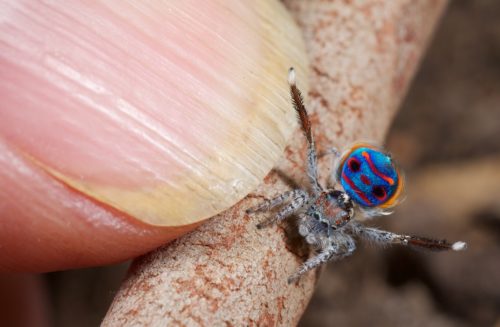
This is Maratus speciosus shown next to a fingernail.
(Source: Jurgen Otto, via PeacockSpider.org.)
Peacock spiders are found in Australia. All peacock spiders are tiny – about as big as the head of a screw. Peacock spiders don’t spin webs. They are quiet, and tricky like cats, and they jump quickly to kill small insects.
Dr. Otto told ABC news in Australia that peacock spiders are more like humans than other spiders or insects are. “They’re very charming animals. They’ve got these big eyes, and it’s very easy to like them “, he said. “I’ve often compared them to puppies and kittens. …They’re curious, they get excited, they push themselves up on their legs to see better, they crouch down and hide.”
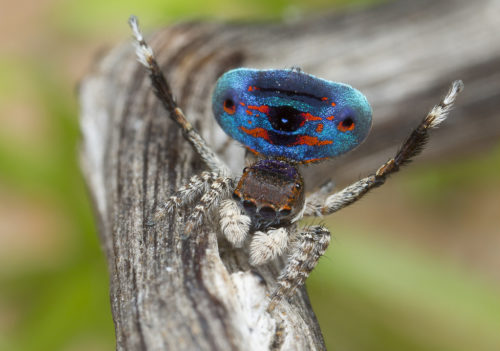
This is Maratus karrie.
(Source: Jurgen Otto, via PeacockSpider.org.)
But what really makes the peacock spiders special are the differences between the male and female spiders and the way that they attract each other.
The female spiders are usually a very dull, gray color. But the males look startling, alive with bright colors and patterns.
When a male is looking for a mate, it does a very fancy dance. It moves its body in unusual ways and spreads its fan to show off its beautiful colors. If the female likes the male, she holds still to show that she likes him, too. After the dance, the male usually taps the female gently on the head.
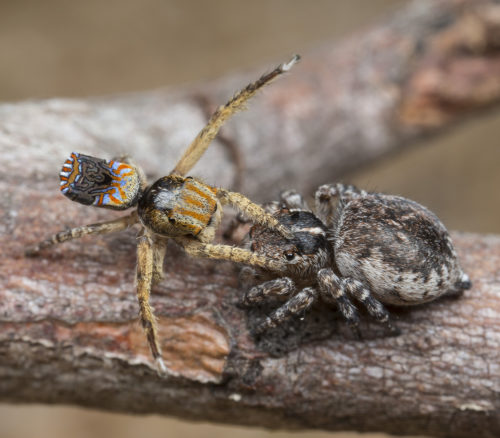
Dr. Otto says that all kinds of peacock spiders do this.
(Source: Jurgen Otto, via PeacockSpider.org.)
Different species of peacock spiders have different colors, different patterns, and different dances.
For years, Dr. Otto and Mr. Knowles had been looking for a spider that Mr. Knowles had seen once in 1994. Mr. Knowles had called this species “Hokey Pokey”, because of the amazing dance that the male did.
In October, 2017, Dr. Otto finally found the Hokey Pokey – 23 years after Mr. Knowles first spotted it. That spider has now been given the more serious sounding official name of Maratus tortus.
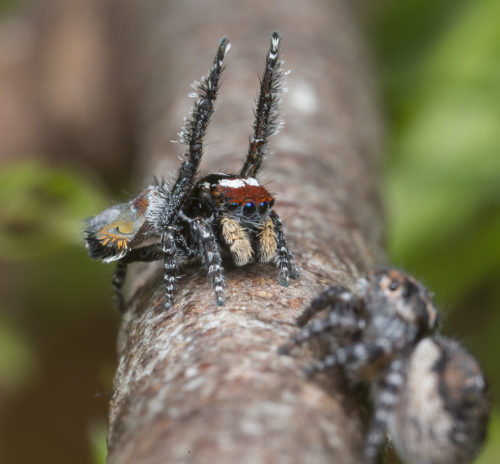
This spider’s official name is Maratus tortus.
(Source: Jurgen Otto, via PeacockSpider.org.)
While he was looking for the Hokey Pokey, he also found a brand-new species. He called the new species Maratus unicup because he found it near Lake Unicup in Western Australia.
Dr. Otto doesn’t see colors so well, so at first he wasn’t very impressed with his new species. But after he put pictures of it on the Internet, people began to comment on the spider’s amazing colors. That’s when he understood that he’d found something special.
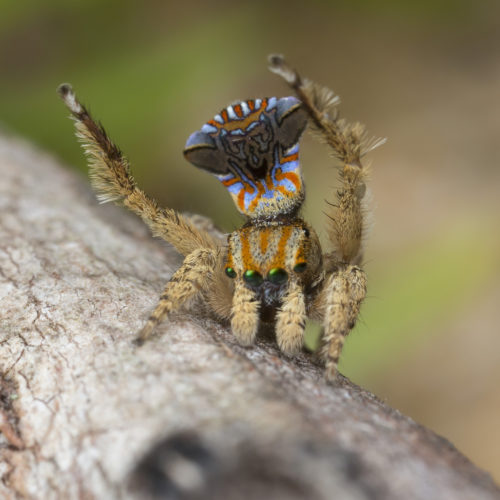
That’s because he doesn’t see colors well.
(Source: Jurgen Otto, via PeacockSpider.org.)
Dr. Otto says he doesn’t think that there are many more new species of peacock spider out there. But he plans to keep looking, just in case.
😕
This map has not been loaded because of your cookie choices. To view the content, you can accept 'Non-necessary' cookies.
